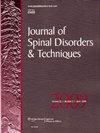I型,II型,偶尔还有III型:我们怎么可能出错?
Q Medicine
引用次数: 2
摘要
计划研究的一个重要部分是决定得出错误结论的风险是可以接受的。第一类错误发生在研究得出假阳性结论时。假阴性,即当存在差异时却无法识别差异,被称为II型错误。本文回顾了这两种常见错误类型之间的区别,并讨论了用于设置可接受错误级别的约定。本文章由计算机程序翻译,如有差异,请以英文原文为准。
Type I, Type II, and Occasionally Type III: How Can We Go Wrong?
An important part of planning a study is deciding what risk of drawing incorrect conclusions is acceptable. Type I error occurs when a study draws a false-positive conclusion. A false negative, not appreciating a difference when one exists, is known as type II error. This article reviews the difference between the 2 common types of error and discusses conventions used to set acceptable error levels.
求助全文
通过发布文献求助,成功后即可免费获取论文全文。
去求助
来源期刊
CiteScore
2.16
自引率
0.00%
发文量
0
审稿时长
3 months
期刊介绍:
Journal of Spinal Disorders & Techniques features peer-reviewed original articles on diagnosis, management, and surgery for spinal problems. Topics include degenerative disorders, spinal trauma, diagnostic anesthetic blocks, metastatic tumor spinal replacements, management of pain syndromes, and the use of imaging techniques in evaluating lumbar spine disorder. The journal also presents thoroughly documented case reports.

 求助内容:
求助内容: 应助结果提醒方式:
应助结果提醒方式:


